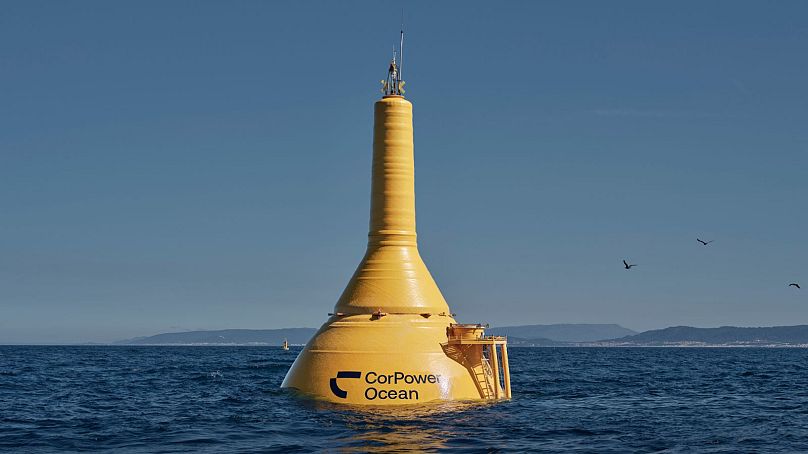Covering 71 percent of the Earth's surface, oceans are one of the world's most valuable yet largest untapped renewable resources.
Ocean wave energy is vast, and it has the potential to significantly contribute to the global shift towards clean energy. The International Energy Agency states that the development of ocean power generation must increase by 33 percent annually in order to achieve a world with net-zero emissions by 2050.
“have the potential to be significant, reliable, and sustainable power sources,” says José Miguel Rodrigues, a senior research scientist at SINTEF, one of Europe's largest research institutions.
.
“Tidal energy has an estimated global potential of 800 to 1,200 terawatt-hours, mainly in narrow waterways such as inlets and around islands,” says Rodrigues. “Regulated by predictable gravitational cycles rather than weather conditions, [tidal energy] offers a consistent electricity supply and aids in balancing the grid.”
The ocean energy converter device designed after the human heart's mechanism
Cardiologist Dr. Stig Lundbäck was inspired by the pumping action of the human heart to co-found Swedish wave energy firm CorPower Ocean in 2009.
After years of research in hydrodynamics, the company created 'CorPack' - a massive buoy crafted from robust, lightweight materials that harnesses the kinetic energy of waves to produce clean and stable electricity.
The way CorPack operates is similar to how the heart uses hydraulic pressure to pump blood in one direction. It exerts force on itself to draw the buoy downward while the waves push it upward. The motion of the waves is converted into rotational energy, which is then transformed into electricity by generators.
The converter's mechanism allows for a substantial amount of energy to be harnessed using a relatively small and cost-effective device, a CorPower Ocean representative explains.
It is claimed that the converter can produce more than five times as much electricity per tonne of equipment in comparison to the most advanced wave energy converters currently available.
Rodrigues views CorPower Ocean's breakthrough as a notable accomplishment. "CorPower has consistently progressed through development stages, securing investments and research grants, particularly from the EU," he states.
"They have successfully implemented a structured approach, which has enabled them to deploy a device in the water, a notable achievement considering the limited budget allocated for wave and tidal energy in Europe.”
Near Aguçadora, where it is supplying energy to the Portuguese power grid.
Numerous companies and research institutions are attempting to tap into the potential of ocean energy.
Other notable examples include Italian energy company ENI with its Inertial Sea Wave Energy Converter, the Chinese-built Nankai - a floating generator powered by waves - and Finland-based AW-Energy’s WaveRoller, comprising large underwater panels.
Why does wave energy receive less attention compared to wind and solar energy?
To meet nearly half of the world's electricity needs, while wind energy is expected to account for about one third.
Compared to wind energy, tidal energy is considered the most predictable of all variable renewable sources.
Despite this potential, wave and tidal power technology is falling behind in the clean energy competition.
Wave and tidal energy have yet to show commercially viable technologies at a large scale.
Wave energy faces stringent demands for consistent performance as well as the ability to withstand intense ocean forces. Several prototypes have failed to meet expectations or underperformed, whereas offshore wind and solar energy have shown reliability and decreasing costs.
Which European countries have the greatest potential for harnessing energy from ocean waves?
Evaluating potential involves taking into account both the availability of natural energy sources and the practicality of utilizing them.
"The UK and Portugal - have the most favorable conditions for wave energy at utility scale," says Rodrigues.
“Norway, with its extensive coastline and numerous isolated island communities, presents a significant market where wave energy could help lower grid costs and increase energy self-sufficiency.”
Success hinges not only on technical feasibility, but also on economic viability, social acceptance, and a supportive policy environment.

